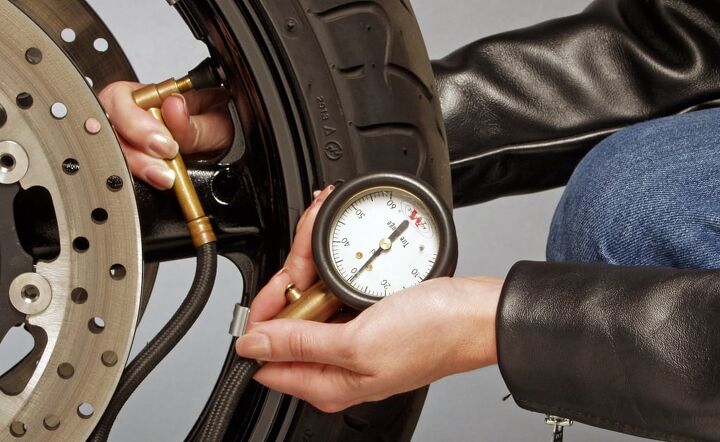| Topic Review (Newest First) |
| 02-10-2016 07:35 PM | |
| Motorcycle.com |
How To Properly Check Your Motorcycle’s Tire Pressure  Quote:
OK, I know, checking a motorcycle’s tire pressure is super easy. All you do is take out your handy tire gauge and apply it correctly to the wheel’s valve stem. Well, yes…and no. Tire manufacturers recommend that you check your bike’s air pressure when the rubber is cold – meaning at ambient temperature. If you’ve ridden your bike in the last few hours or have parked it in the sun, where the tires can absorb heat, the pressure will read artificially high.
Yes, we know that racers often check tire pressure immediately after they leave the track, but they’re actually using the pressure rise they’re getting out of their tire as a barometer for estimating the tire’s temperature and whether they’re leaving potential traction on the table. Street riders have different needs. First, the air pressure helps the tire carcass maintain the proper profile, making for predictable handling in the varied environments encountered out in the real world. Second, proper air pressure helps keep the tires from overheating and cooking the life out of the rubber compounds. (A quick FYI, race bikes typically run lower tire pressures than street tires.) Third, your bike will get better gas mileage and longer tire life with proper inflation. Finally, both over- and under-inflated tires are more prone to failure than those using the correct air pressure. So, before you ride your bike, check the tires’ pressure with an accurate gauge. Also, if you need to move your bike to get the valve stem to an easier place to use the gauge, take advantage of the movement to examine the tire’s tread for any sharp pokie things (a technical term) that could – or may have already – cause(ed) a leak. If it turns out that your tires do need air, an inexpensive bicycle pump can take care of upping the pressure a couple pounds without you even breaking a sweat. |
| Posting Rules | |

 Your Privacy Choices
Your Privacy Choices